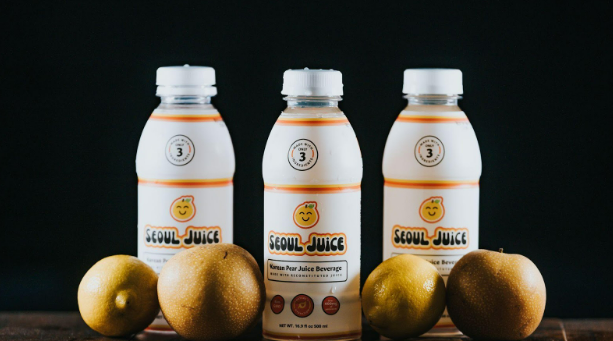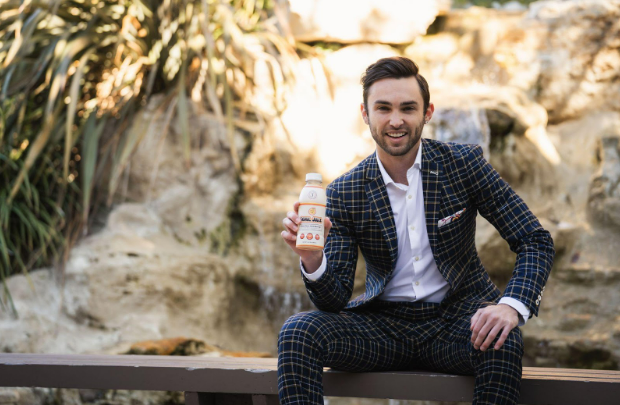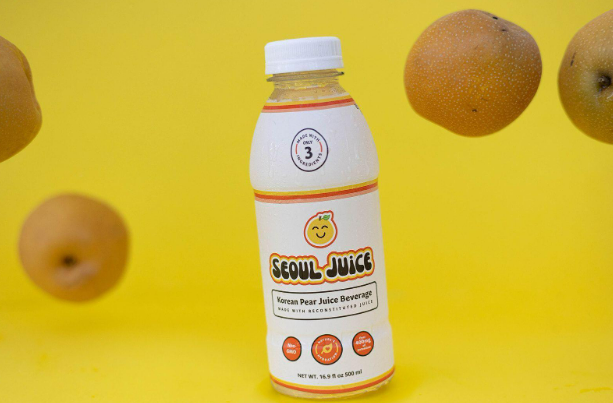BRANDVOICE
In the 1940s, when Yale University formed its first boat club, the pioneers had no idea that they were starting a movement that would become a significant part of American culture for decades to come.

College sport has become a critical part of American education, and the activities now range from football to swimming, volleyball, and basketball, amongst others. Athletics and sports have become the basis for scholarships and take center stage in college and high school life, serving as a rewarding experience for both athletes and the community alike.
The physical exertion and demands of playing sports at a high level are pretty high over the long term, but in the short term, schools try to provide hydration options for their athletes in the form of sports drinks or energy drinks to help replenish their lost electrolytes and boost energy. However, studies have shown that constant consumption of some of these drinks among athletes leaves them with lasting adverse effects that will be evident in the latter years of their lives.
Some of the adverse effects of this addiction include; dehydration, heart complications, heart failure, insomnia, anxiety, allergic reactions, and a host of others.
Whereas the founders of Australia’s first Korean pear juice company, Bae, market it – with some evidence – as hangover cure, in America the reasons were more wholesome. Luis Manta, founder of Seoul Juice, America’s first Korean pear juice, started the company after enduring a severe allergic reaction to a popular sports drink during soccer practice as a first-year college soccer player. Mr. Manta believes that there is a need for athletes all over America to begin exploring a more natural route to hydration. It is in this quest that the idea of Seoul juice was born.
In his words, “After the allergic reaction, I quickly realized how sports drinks were packed with chemicals and additives and wanted a cleaner hydration alternative. I was a division 1 soccer player at Saint Louis University and needed something to keep me hydrated. I was not too fond of Coconut water and wanted a great-tasting natural product. I started blending Korean Pears and Lemons in my dorm room and that is when Seoul Juice was born. Since launching in my dorm room, we have gained national distribution and are one of the fastest-growing beverage brands in the country.”
Sports Drinks And Energy Drinks; The Downsides
The marketing messaging for many of these drinks suggests they contribute to general fitness, alertness, and agility. However, sports drinks and energy drinks have two main constituents; sugar and caffeine. The addictive properties of caffeine are well known, and for an athlete who has to stay hydrated, constant consumption of these unhealthy sugars and additives is not advisable either.

Recent research has shown that an estimated 42.5% of undergraduate college students are regular consumers of energy drinks, among those surveyed, most admitted to using it for sports, physical activity, study, projects, or examinations, and to stay awake and alert. This research also shows that the most associated risk factors were increased heart rate or blood pressure. Energy drink consumption also showed a close association with alcohol use and smoking.
According to Mr. Manta, “Most young people do not know the difference between energy drinks and sports drinks. The caffeine content in energy drinks makes them highly addictive, and while sports drinks are generally thought to not be as deadly, they still contain high amounts of sugars and chemicals that make habitual consumption a risk. The strain of college and high school often ensures that these young athletes and regular students as well, start relying on these drinks for a quick energy boost in their everyday activities and beyond the field of play, and this is risky, to say the least.”
In Luis Manta’s case, he suffered an allergic reaction during sports practice, which many assume is rare, but one that Luis insists is not as rare as it might appear. In his words, “The reactions are not always as instant as it was in my case, but a large number of athletes are reacting negatively to the chemicals in these drinks,”
Research has uncovered other risk factors associated with the habitual consumption of these drinks, Cardiovascular effects, mental and psychiatric disorders, and epileptic seizures, to mention a few. The Ideal Sports drink would have more natural sugars and fewer chemical constituents like citric acid and hyper-sweeteners. Luis Manta has set out to create this with Seoul Juice: “Seoul Juice has half the sugar of other juices and has as much potassium as a banana. It is a great alternative for those looking to find a healthy, great-tasting alternative.” He explains.
The Power of Marketing And Sponsorships

The National Center For Biotechnology Information (NCBI) has studied the effectiveness of sports drink and beverage marketing. According to the NCBI, most beverage advertisements are for energy-dense, nutrient-poor products. The study places the annual marketing expenditure for these companies at a whopping $1.6 billion, explicitly targeted at youths.
Common marketing channels include television, the Internet, radio, packaging, in-store promotions, sports sponsorships, and even uncommon channels like video games, which many young athletes play a lot of. Food and beverage companies are motivated to target youth because they collectively spend $200 billion annually and indirectly influence $200 billion in additional spending.
High school and college sports teams cannot accept external corporate sponsorships in most regions. Still, the close affiliation of these teams with the local teams in the NBA or NFL makes the impact of Pro sponsorships just as potent on these college and high school teams.
According to Luis Manta, “The marketing messaging of these products is vague at best. Walk into a mall and you will find energy drinks placed on the same shelves as sports drinks as if to say that they are the same and this is harmful. Products with such high-risk factors should be mandated to have disclaimers, much like the cigarette companies.”
Seoul Juice And the Search for Alternatives.
The growing awareness of the adverse effects of habitual consumption of energy and sports drinks is giving birth to a new generation of healthy drinks, with Seoul Juice at the forefront. Today’s wellness-minded consumers seek energy-boosting drinks with less sugar and more plant-based nutrients. This has become the value-added concept that entrepreneurs like Luis Manta have sought to offer to the market.

From experimenting with blending fruits like Korean Pear and Lemons, the Seoul Juice experiment has grown into an award-winning drink soon to be available in stores nationwide. With its natural content, Seoul juice provides athletes with all their hydration needs while ensuring it leaves them with a great taste.
Since launching in his dorm room, Seoul Juice has gained national distribution and recognition; “We are currently one of the fastest-growing beverage brands in the country due to our stand-out taste and natural contents,” Manta explains, but providing alternatives to the billion-dollar sports drink industry has not come at a cheap price; “I have had to sell my car, sleep on friends couches, label the products by hand and deliver them personally for years. Bootstrapping the company for so long has not been easy, but it has been the price I have had to pay to build what is now a multi-million dollar company,” He adds.
Seoul Juice recently won the David Metlzers 2 Minutes Drill and was named a finalist in the Benvet new beverage showdown in 2022. The beverage company has recently closed its first funding round with a high seven-figure valuation with many notable investors, such as John Cerasani of Glencrest Global, Bob Sirmans, Eric Evans, and Jeffrey Chernick, a feat which Luis Manta deems a testament to the outcry for healthy alternatives.
The global sports drink market is projected to grow from $27.22 billion in 2021 to $36.35 billion in 2028 at a CAGR of 4.2% in the forecast period. The pandemic is responsible for a significant growth in demand between 2020-2021, but the year-on-year growth has maintained momentum since then.
While it is unlikely that Americans will stop consuming energy drinks and sports drinks, it is possible to inspire more responsibility among the food and beverage companies responsible for creating these products. The short-term goal among wellness enthusiasts is to ensure that the marketing message is unambiguous as to the effect of habitual use of these products. In the long term, most would love to see more healthy alternatives taking center stage.
This article is a paid partnership with Seoul Juice.